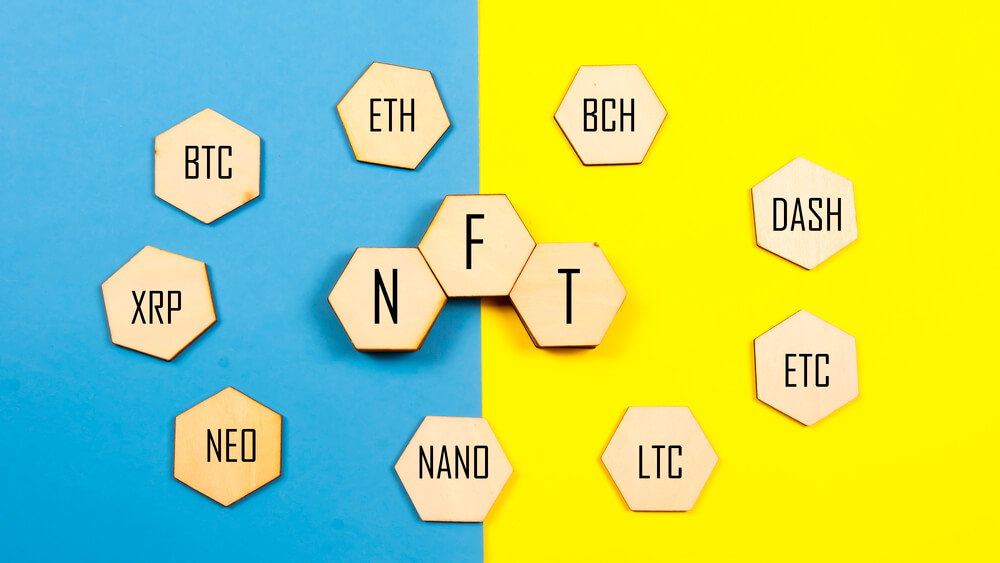Discover the top 15 types of NFTs ranging from digital art all the way to metaverse ready NFT fashion.
The explosive rise of Non-Fungible-Tokens (NFTs) over the last two years has seen the rise of hundreds of impressive projects. The blockchain technology first pioneered by Bitcoin was embraced by digital artists who used blockchain-based NFTs to create art that was hard if not impossible to falsify and easy to trade online.
What started as a digital art niche quickly snowballed into a billion-dollar market with notable NFTs, including Beeple’s ‘The First 5000 Days’, which sold at Christie’s auction house for $65 million, and the pixilated CryptoPunk avatars selling for well over a $1 million to collectors and metaverse enthusiasts.
Although we still tend to associate NFTs with digital art, you’ll see in this guide to the top 15 NFT types, that there is a lot more to this technology than just digital art.
Table of Contents
1. Digital Art NFTS
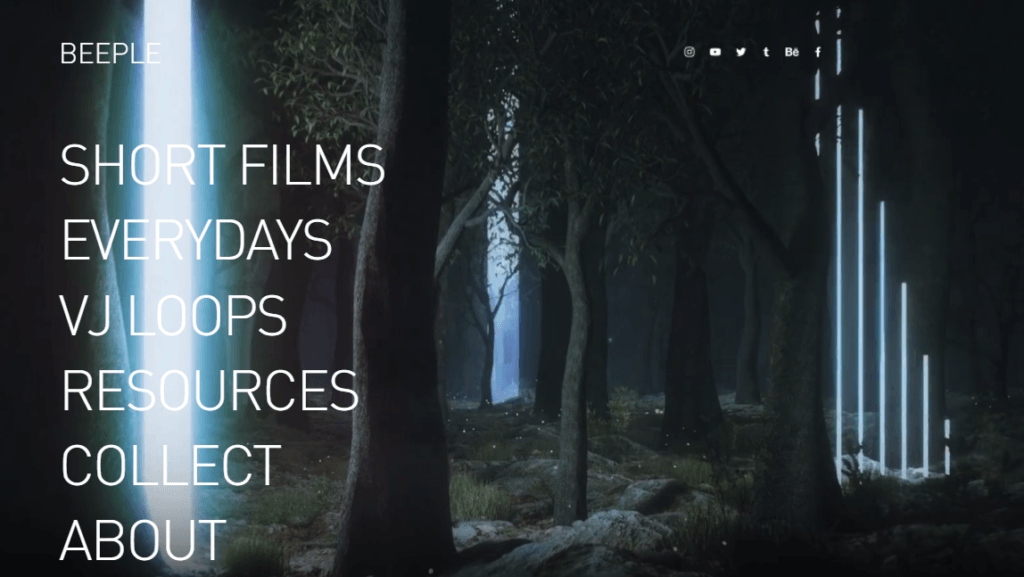
Although NFTs have come a long way in the past few years, their roots are still found in digital art, and this type of NFT continues to be one of the most important and lucrative. NFT artwork is often created on the Ethereum blockchain network and then traded on NFT marketplaces like OpenSea and Rarible for cryptocurrency.
Digital artists are drawn to NFTs and especially the Ethereum (ETH) network because their work is relatively safe from forgery and theft, unlike traditional art, which is often embroiled in million-dollar fraud cases. Furthermore, NFTs create a guaranteed proof of ownership over the underlying digital art.
Some of the most expensive NFT art pieces include:
- Beeple’s ‘The First 5000 Days’ Value: $69 million
- Beeple’s ‘Crossroads’ Value: $6.6 million
- Kevin Abosch’s ‘Forever Rose’ Value: $1 million
- Pak’s ‘Metarift’ Value: $900,000
- Steve Aoki and Antoni Tudisco’s ‘Hairy’ Value: $880,000
2. NFT Collectibles
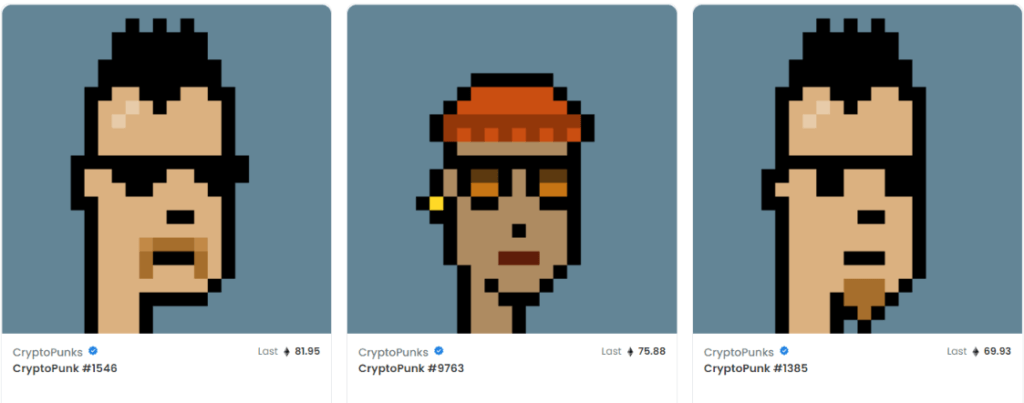
Digital collectibles and NFTs are a match made in heaven; in fact, NFTs are often referred to as digital trading cards because collectible NFT tokens are often traded between users who want to build a collection of the rarest and most expensive tokens.
The origin of NFT collections space can be traced back to the launch of the CryptoPunks collection in 2017. The collection of 10,000 pixilated punks, each with unique features, was created on the Ethereum blockchain as ERC tokens and became a hit with social media users who started to use them as their profile pictures.
The CryptoPunks collection exploded in value and is worth over $1 billion today. The success of CryptoPunks inspired a new generation of developers and digital artists who launched their own collectible NFT projects, hoping to compete with the Punks.
The five most valuable NFT collectibles to date by market capitalization, according to CoinGecko, are:
- Bored Ape Yacht Club (BAYC) Market Capitalization: $2.4 Billion
- CryptoPunks Market Capitalization: $1.2 Billion
- Mutant Ape Yacht Club (MAYC) Market Capitalization: $970 million
- Otherdeed for Otherside (OTHR) Market Capitalization: $740 million
- CloneX (CLONEX) Market Capitalization: $650 million
3. Blockchain Gaming
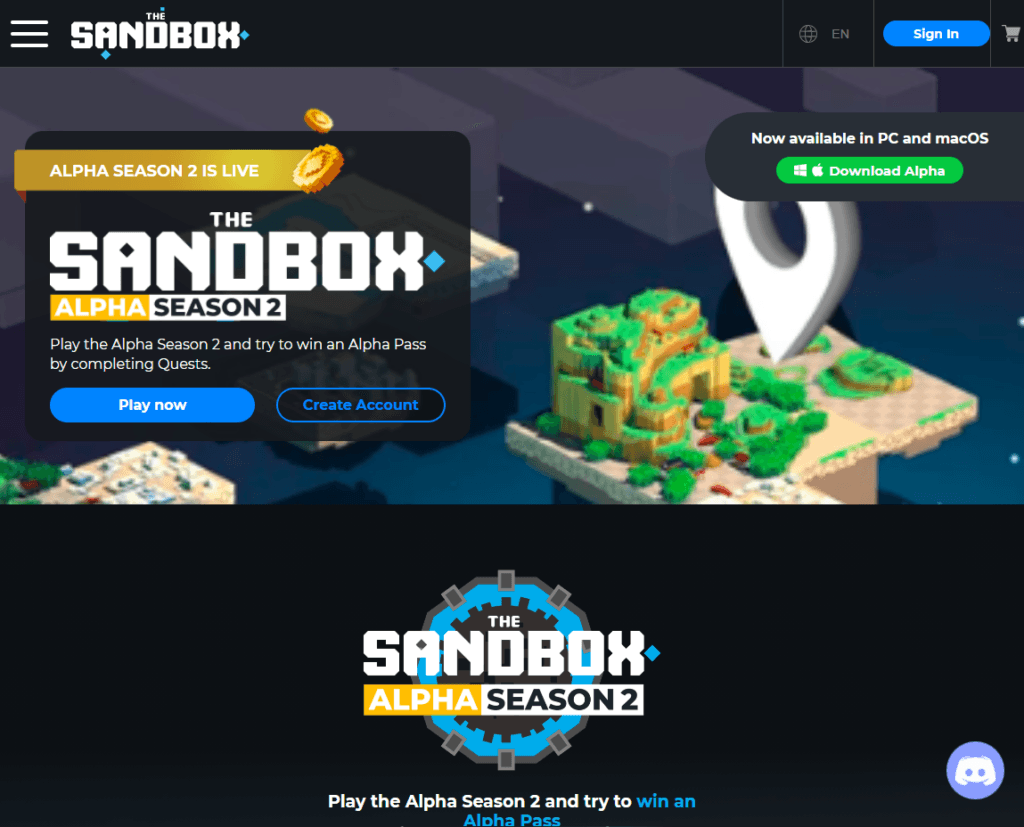
NFT technology has made it possible to create in-game digital assets that are unique and tradable. As a result, the gaming industry is no longer only profitable for the developers but also for players who master NFT games and sell the game items and cryptocurrencies that they win for a profit.
NFT gaming started gaining mainstream traction through the Axie Infinity game, which took inspiration from Pokemon with players battling each other with NFT creatures for the in-game cryptocurrencies known as Smooth Love Potion (SLP) and Axie Infinity (AXS) which can then be sold on popular exchanges such as Binance and Coinbase.
Axie Infinity started a trend, and new NFT gaming projects are constantly being developed as millions of players leave the traditional gaming market now known as Play-to-Earn.
Although Axie Infinity remains the biggest name in NFT gaming, dozens of other projects are breaking into the space, including:
Thinking about getting into blockchain gaming? If so, take a look at our blog post on the most profitable play-to-earn games on the market here.
4. NFT Memes
The rise of memes as an online phenomena put a smile on millions of people’s faces all across the web; whether it was a supportive message from ‘Success Kid’ or the Futurama ‘shut up and take my money’ illustration, we all cracked a smile at some point over a meme. NFTs took memes and gifs from an amusing online joke and made them into million-dollar digital assets.
Popular memes were minted into NFTs, and people scrambled to become the sole owners of some of the most shared images ever to grace social media.
Goblintown is an example of a meme NFT that started as a free mint. It played on the concept of crypto winter and getting rekt buying NFTs. The most expensive NFT memes ever sold are:
- Doge Meme Value: $4 million
- Coffin Dance Value: $1 million
- Nyan Cat Value: $588,000
- Overly Attached Girlfriend Value: $419,000
- Disaster Girl Value: $402,000
For a comprehensive list of the top NFT memes on the market, check out our dedicated blog post here.
5. Metaverse Land
When Facebook (now Meta) CEO Mark Zuckerberg announced last year that the social media giant would be turning its attention to building a virtual world also known as a metaverse, the NFT market’s role in this venture became apparent.
According to Zuckerberg and other metaverse enthusiasts, we will explore virtual worlds using avatars and spend money buying virtual real estate, digital art, clothes, and just about everything else in the form of NFTs.
NFTs allow us to trade unique assets in the Metaverse, which means a specific plot of land can be assigned to you, or a limited edition pair of virtual Nike trainers can be created and only sold to 100 avatars.
The top NFT projects focused on building the metaverse are:
- The Sandbox (SAND) Market Capitalization: $1.7 billion
- Decentraland (MANA) Market Capitalization: $1.5 billion
- Enjin (ENJ) Market Capitalization: $622 million
- Gala Games (GALA) Market Capitalization: $532 million
- High Street (HIGH) Market Capitalization: $25 million
6. NFT Sports Memorabilia
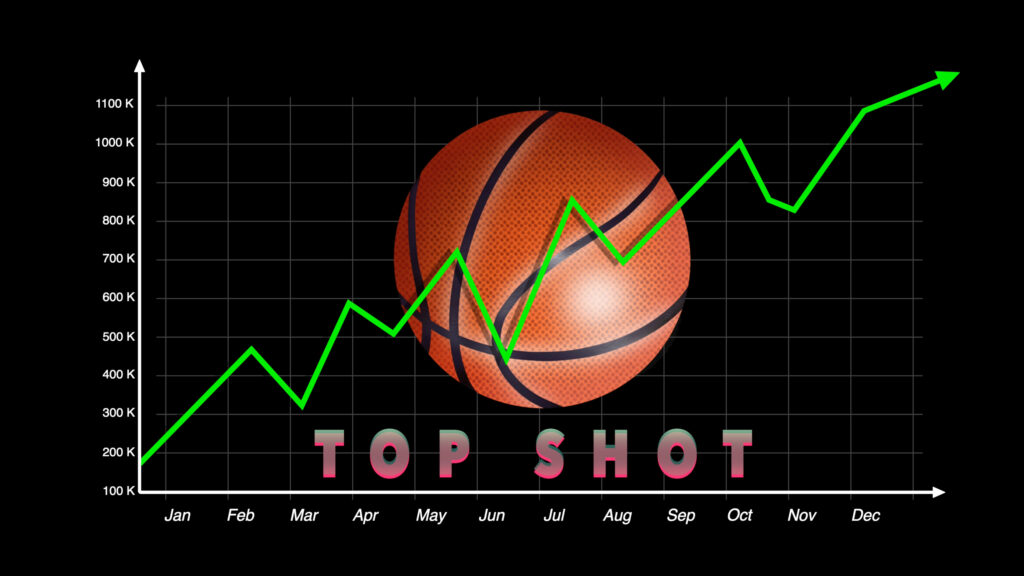
Sports Memorabilia has become one of the most successful branches of the NFT collectibles market. Collecting sports memorabilia has been popular since the 20th century, when Baseball cards became especially popular, with some of the rarest trading cards selling for well over $100,000.
Minting sports memorabilia and even video clips of famous sporting moments onto blockchains as NFTs makes perfect sense; it simplifies the verification of ownership and makes trading them on the global market straightforward.
The top NFT sports memorabilia collections are:
7. Ethereum Name Service Domains
The Ethereum Name Service Domains are basically a web 3.0 version of traditional domain names. You can also use them to get paid in crypto, to log into Web 3.0 tools and to create a virtual identity. Three and four-digit ENS domains were free to mint up until April and early May of 2022. Now, they trade hands for several thousand dollars, in Eth. You can check out popular ENS collections on ENS.vision
Traditional domain names might not have the ‘wow factor’ of other NFT types, but they are important as they play a central role in how the internet works. While domain names on the web are typically held and managed by a centralized authority which makes them vulnerable to security threats
By minting domain names onto the blockchain, the sites are stored in a decentralized manner, arguably making them more secure than their centralized counterparts. Some crypto domain names are sold for eye-watering prices, these are some of the most expensive names currently on the market:
- ETH.com Value: $2 million
- BTC.com Value: $1 million
- Tokens.com Value: $ 500,000
- BitcoinWallet.com Value: $ 250,000
- CryptoWorld.com Value: $ 195,000
8. NFT Fashion
It may sound slightly strange at first, but with the growth of the metaverse, NFT fashion is expected to become a billion-dollar industry. Big fashion brands, including Gucci and Nike, have been developing NFT projects partly so people can equip their avatars with expensive clothing and make a profit from NFT sales.
It’s early days for NFT, but there are already some impressive projects out there, including:
- Dolce & Gabbana ‘Colezione Genesis’
- Gucci SuperGucci Collection
- Nike and RTFKT Metaverse Sneakers
- Burberry Blankos Block Party NFT
- Louis Vuitton’s ‘Louis: The Game’ NFT Video Game
9. Trash Art
Trash art is a relatively new part of the NFT ecosystem and represents one of the stranger use cases of NFT technology. Trash art is essentially an anti-art movement that argues that anything can be art, not only the high-brow fine art we see displayed in museums and galleries.
The trash art movement depends heavily on the idea of ‘remixing,’ which means taking an everyday object and turning it into art. The issue with remixing is that it often leads to copyright issues with owners of the original items claiming the trash artist is defrauding them.
The most famous ‘remix’ copyright case involved a Home Depot bin that was turned into a gif and led to the artist Robness’ having his work removed from an NFT auction site.
The most well-known trash art NFTs include:
- Robness’ ‘64 Gallon Toter’
- Jay_Delay’s ‘trash art manifesto’
- Kamisama’ ‘Wearable 64-gallon toter’
- Max Osiris’ ‘Low Effort NFT’
- CryptoYuna’s ‘Illegal TRASH Quarantined’
10. Generative Art
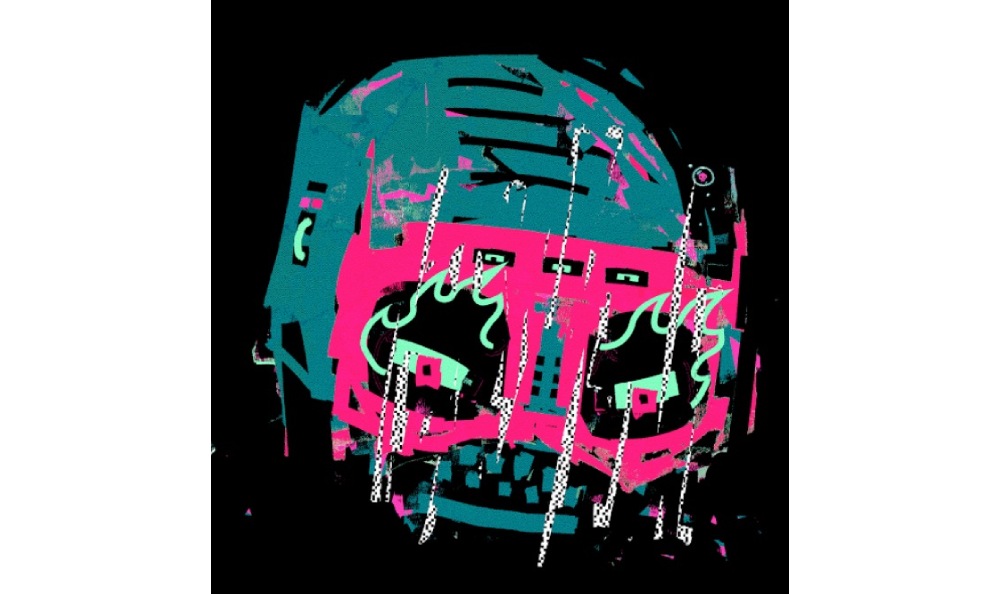
Generative art combines the power of algorithms with the creativity of an artist to generate NFT collections. Machine learning takes an artist’s building blocks and builds huge NFT collections where every token has a unique combination of features.
Creating a collection of 10,000 tokens by hand would be time-consuming, and ensuring that each piece is unique in some way would be almost impossible for a human.
The power of generative art in NFTs is reflected by the fact that some of the most valuable NFTGenerative art describes using code to create NFTs with unique characteristics The top generative art NFTs include:
- Chromie Squiggles
- The Eternal Pump
- REPLICATOR by Mad Dog Jones
If you’re interested in getting a more in-depth guide to generative art we’ve got a guide for you right here.
11. Music
The music industry has been plagued by complaints from artists of late claiming that streaming services such as Spotify and Apple Music are taking unreasonable commissions.
NFTs are becoming an increasingly popular alternative for artists looking to cut out the third-party eating into their profits.
The primary way music NFTs have been deployed is by artists selling pre-release albums on NFT marketplaces, giving their fans early access and sometimes a cut of the profits from future sales and NFT merchandise.
The NFT music industry is still in its infancy, but already there have been several notable projects, including:
- MF DOOM masks
- Grimes ‘War Nymph Collection’
- Clarian ‘Whale Shark’
- Belave ‘does the bird fly over your head’
- Shawn Mendes ‘Genies collection’
12. Ticketing
Selling tickets to massive entertainment and sporting events is a vast market, and NFTs are already improving the security of ticket sales by leveraging blockchain technology.
Minting tickets as NFTs reduces the ability of criminals to create fake passports and allows organizers to auction tickets online without a third party which saves money for both the fan and organizer.
Dozens of ticketing-NFT have popped up in the last couple of years and some of the most successful platforms are:
13. Real World Assets
The metadata stored in NFTs generates an almost immutable proof of ownership, making NFTs a great way to show who owns something in the real world and the digital world.
The ownership of an asset through an NFT can theoretically establish a legal precedent better than standard paperwork as it’s more secure and harder to falsify.
The use of NFTs to show ownership of real-world assets hasn’t gone mainstream yet, and it is unlikely to do so without precise government regulation. If this type of NFT does proliferate, then these are the areas you can expect it to affect:
- Real Estate
- Fine Art
- Luxury Goods
- Land
- Commerce
14. Identity
The Non-fungibility of NFTs and the transparent nature of blockchains make it an ideal way of creating and storing official identity documents. It’s possible that in the future, ID cards, passports, and driving licenses will be held on a blockchain; this will give you more control over your documents and reduce the likelihood of identity fraud.
There is a battle going on between networks to build the best digital identity blockchains and the top players at the moment are:
- Ethereum (ETH)
- Cardano (ADA)
- Crytid (CID)
- Solana (SOL)
- CIVIC (CVC)
15. NFT Tweets and Digital History
The former Twitter CEO Jack Dorsey sold his first ‘Tweet’ as an NFT for $2.9 million; although this sale was a one-off, it isn’t technically a ‘category of NFT in itself, but it did create a potential trend. Dorsey’s expensive Tweet showed the ability of NFTs to capture a moment of digital history and monetize them.
The most notable examples of using NFTs to capture historic moments online is the NBA Top Shot collection and CNN’s plan to sell historic news bites as NFTs.
The Final Word On Types of NFTs and Collectibles
The average person had no idea what an NFT was a couple of years ago; it then became a niche way to sell digital art before growing into a way for crypto enthusiasts to gloss up their social media accounts.
Long gone are the days when NFTs were only discussed by crypto-geeks. Today, the technology has established its place in markets ranging from fashion and sports all the way to music and gaming.
It’s never easy to predict where a new technology will take us, but we can be sure that NFTs will continue to change both the virtual and physical world with their ever-expanding number of use cases.

